Getting around in Côte D'Azur
Written on September 16th, 2021 by Renan Greca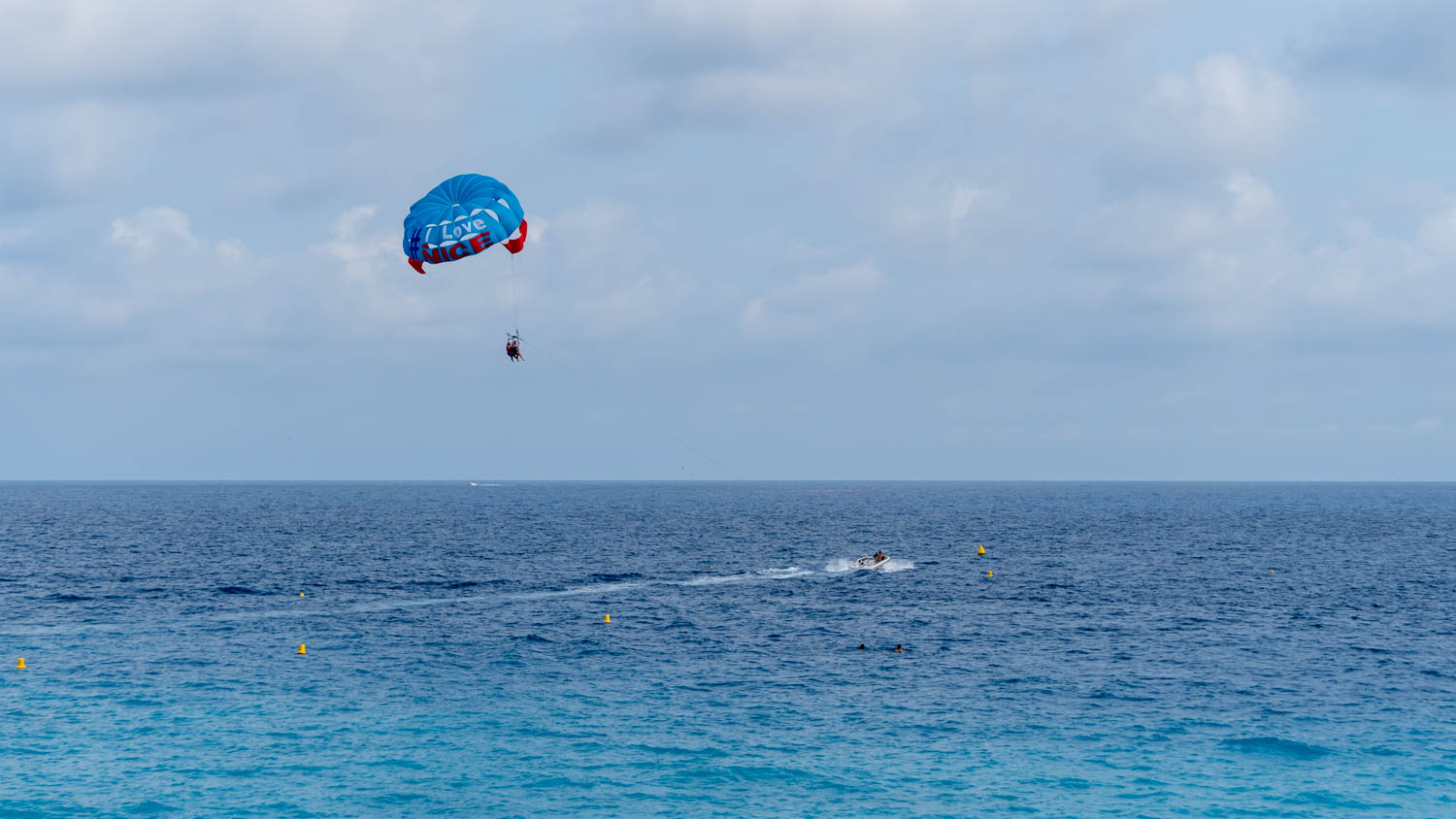
Continuing from the Italian branch of our trip, we took a train from Turin to Nice, in the southern coast of France. There’s no direct train from the Italian cities to the French ones, but the trip is straightforward — you have to stop at a town called Ventimiglia, on the Italian side of the border, and then switch from a Trenitalia train to SNCF, France’s national railway service.
The stretch between the Italian border and the city of Toulon is known as Côte D’Azur (Azure Coast) or the French Riviera. Naturally, the French name comes from the color of the sea visible from the region, a deep and shining blue. The English name actually comes from Italian — the term riviera originally referred to the Ligurian coast (a.k.a. Italian Riviera). Indeed, the region has been part of Italy in the past and, due to the weather and geographical proximity, still feels a lot like Italy.
Despite the similarities, there are also striking differences seen when crossing the border from Italy to France. While Italians seem to enjoy rustic beaches, classic architecture and homely food, the French are more into the appearance of perfection, large yachts and high-end cuisine.
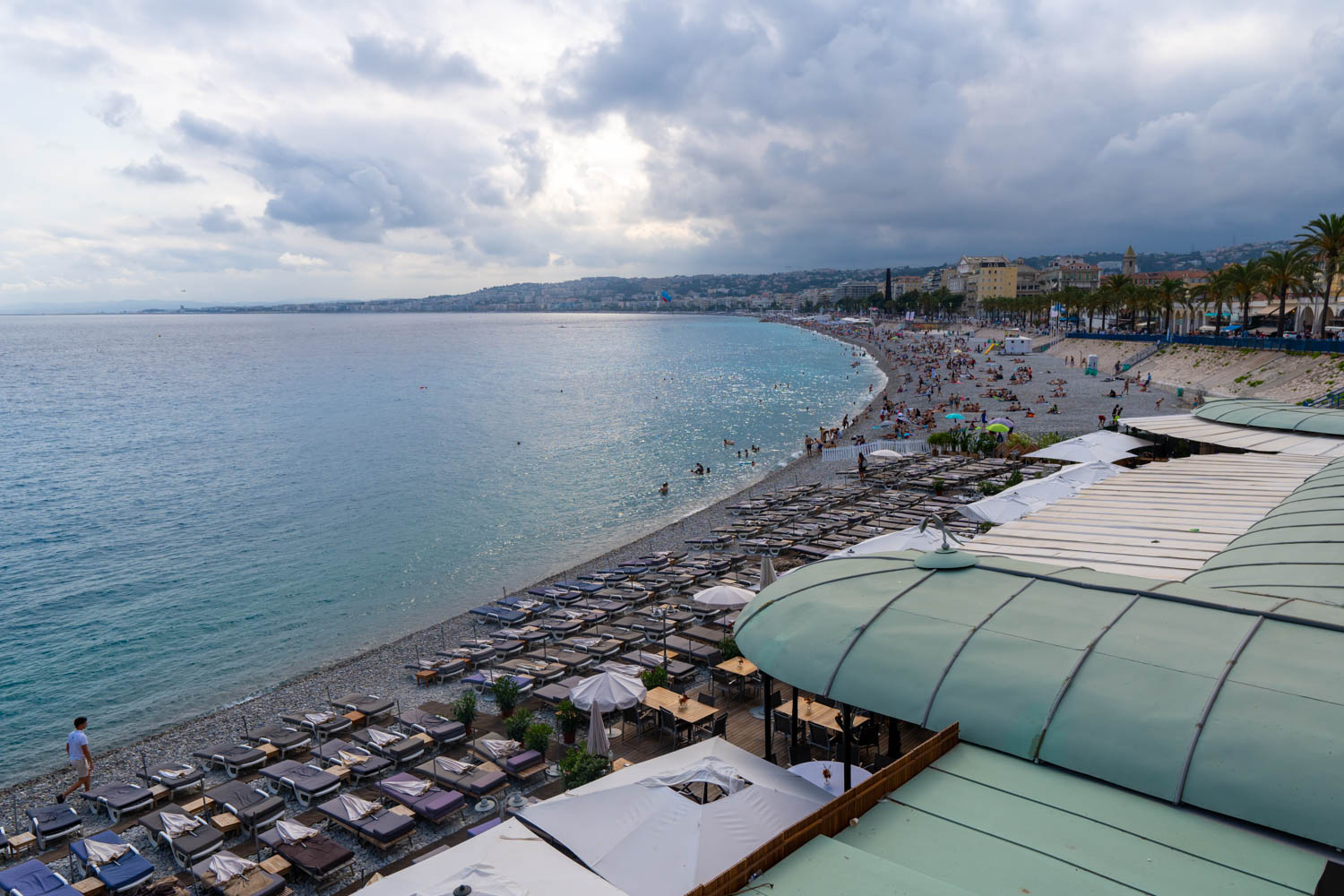
Nice
Our first destination was Nice, the largest city in the region. We stayed at a hotel near the airport — which gave us easy access to the railway and made our life easier on the day of departure. The city proper expands into the surrounding mountains, but the main places to visit are near the coastline.
To me, the most interesting part of the city is Old Nice, or the historical center of the city, lined by the Mediterranean to the south and by a park to the Northwest. The narrow alleways, old buildings and high density of restaurants feel very familiar to someone living in Italy, but the actual food being served there gives away the location.
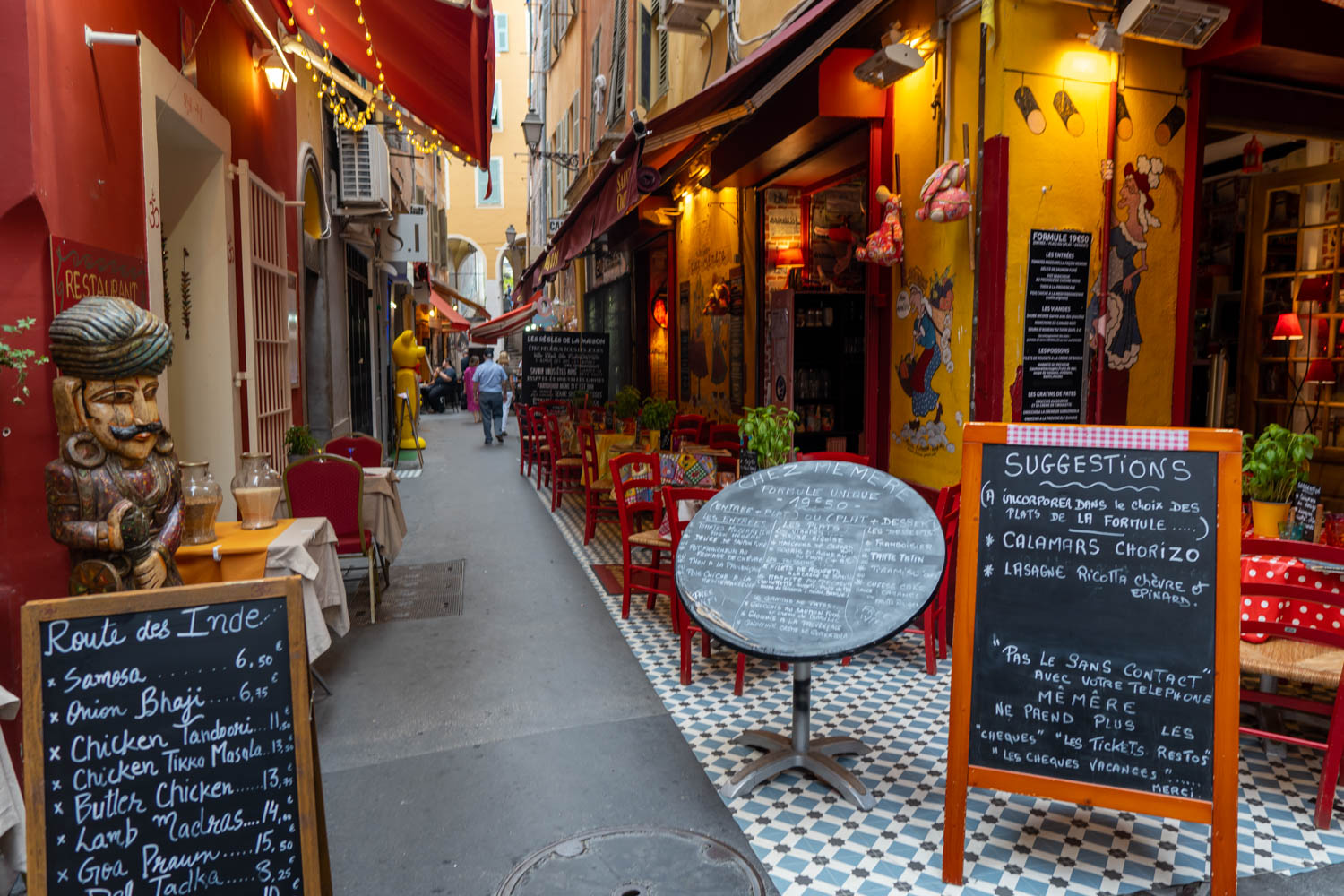
I’m quite fond of French bakeries and they are undeniably distinct from the ones we find in Italy. There’s also a wider variety of restaurant choices, ranging from traditional French options, through obviously several Italian places, to even Indian cuisine.
Don’t tell my Italian friends I said this, but the best gelato I’ve ever tasted was right there in Old Nice, at a place called Fenocchio (again, an Italian-sounding name…). It was so good that we returned there each of the three days we were in the region. They boast around 90 flavors and obviously not every one of them is a knockout, but… Don’t leave Nice without trying their violet and bubblegum options.
The older and newer parts of the city are divided by a park called Promenade du Paillon. It’s narrow and long, placed betwen two avenues, and makes for a very enjoyable walk. There are several attractions there for the kids, as well as public toilets and a fountain that provides free potable water to anyone carrying their own bottle (who needs Evian?).
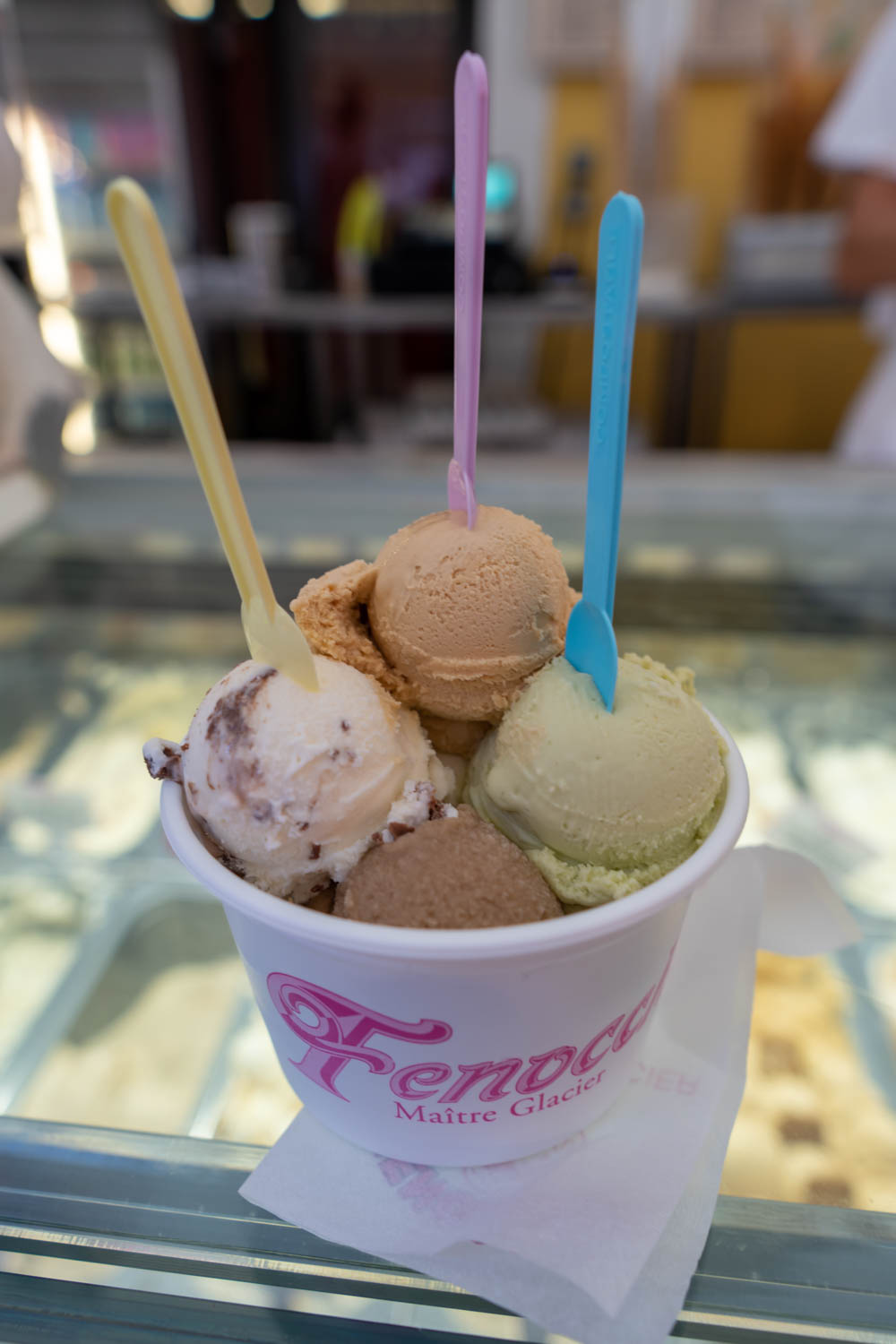
The park leads directly to the coast, which has a long beach spanning from the airport all the way to the hill with a castle. It’s a beautiful beach thanks to the amazing blue water. However, it’s a rocky beach rather than sandy — I recommend water-safe shoes to anyone planning on taking a dip, else suffer from some feet pain, though it seems like the French people are much more interested in sunbathing than swimming. I appreciate that the beachside restaurants do not occupy the whole area: they have limited stretches to place tables and umbrellas in, while several streches continue to be free and open.
Cannes
There’s not so much to say about Cannes other than that it looks like a posh(-er?) part of Nice. It can be easily reached by a 30-minute train ride and the entire town can be easily traversed by foot from the station. It was raining when we left Nice, but luckily it mostly stop by the time we reached Cannes and we only had to face a drizzle.
The day we went was exactly two days prior to the Cannes Film Festival, so it was nice to see the preparations going on. Although it hampered our view to the sea, I feel like it wouldn’t have been very different from what we can already see in Nice.
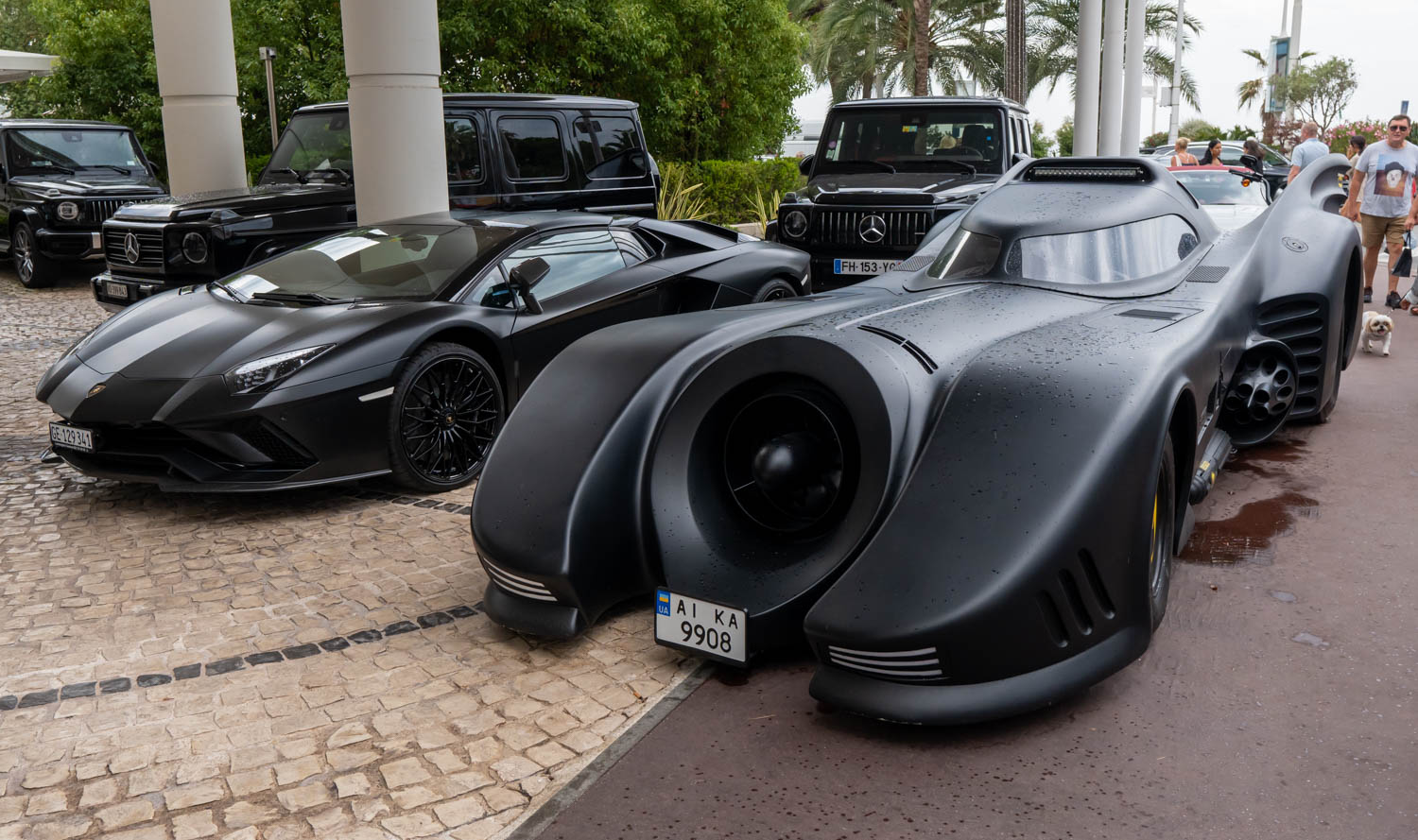
Aside from the fancy hotels, expensive cars, yachts and designer-brand stores, there is not much to see in Cannes, and I don’t think it’s worth more than an afternoon for a visit.
Monaco
I expected Monaco to also be done in half a day — after all, it’s so small! — but the city-state truly deserves an entire day in your schedule, or two if you wish to see everything there is.
The small country remains independent due to a 1861 treaty with France, although it’s obivously not a strikingly different place. Much like San Marino and Vatican City within Italy, Monaco is not officially part of the European Union, but has no border control with France and adopts the euro as its legal tender.
Still, it is clearly a thing of its own. The casino and marina bring some of the richest people in the world to Monaco, which grants the principality a large budget to work with, considering the small area and population.
The city is somewhat layered on top of itself, with elevators being as important of a form of transportation as busses (yes, there are busses! they cost 1.50€ per trip). It’s visible that construction work is continuously being made to add livable space to the small place.
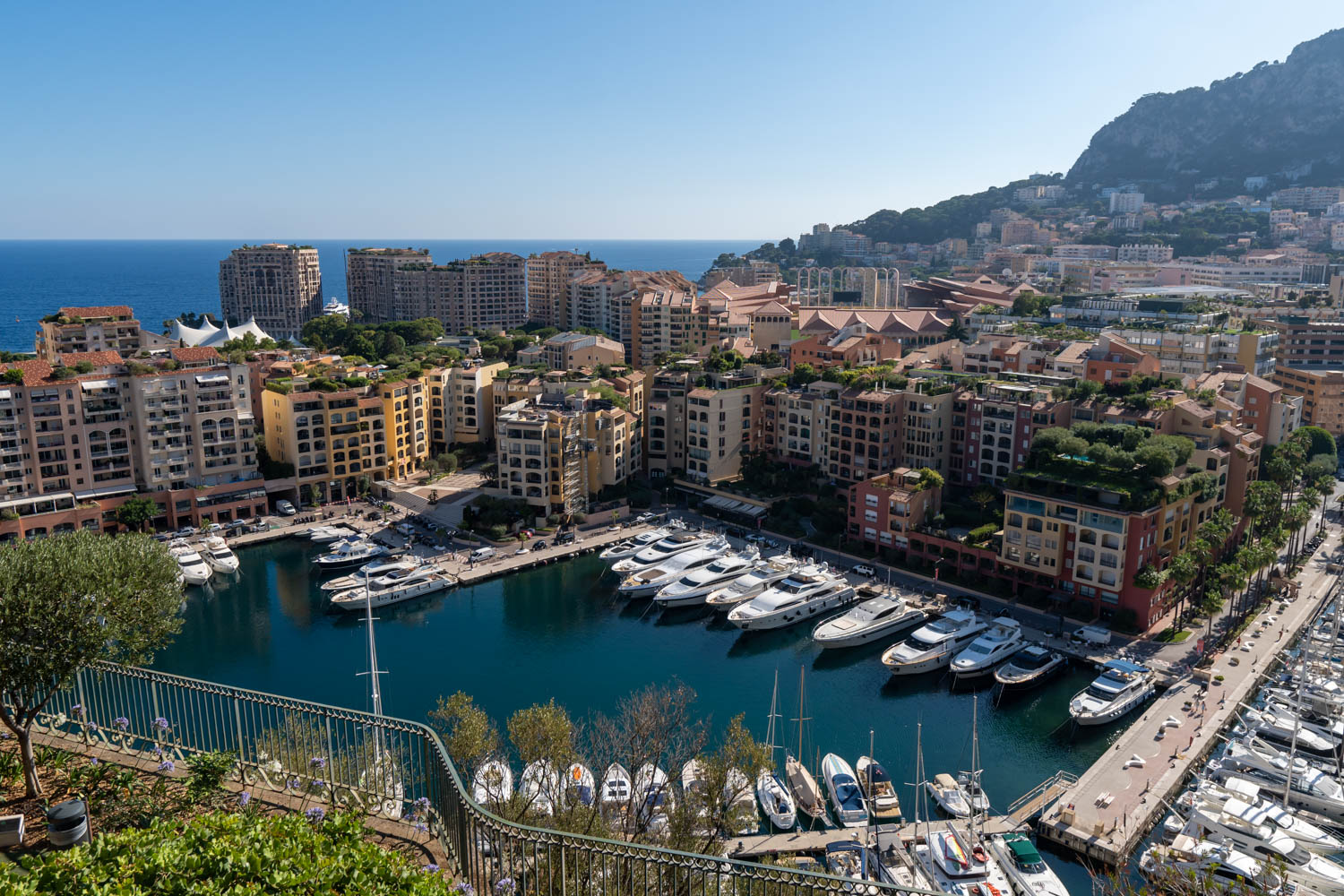
We had the objective of walking across the entire country, so from the train station we made our way to the northern end, near the Monte Carlo Bay hotel. Aside from the novelty of crossing the border to France and noticing the changes in pavement, that area is not so interesting.
Close to it, however, is an artificial beach called Plage du Larvotto, which looks very modern. I definitely recommend stopping there for a bathroom break — the public toilets are some of the best I’ve seen! — and there are restaurants too, although they did not seem worth their prices. On the way from there to the center, take a rest at the cute Japanese garden, although the zen aura is ruined by the sounds of construction work all around.
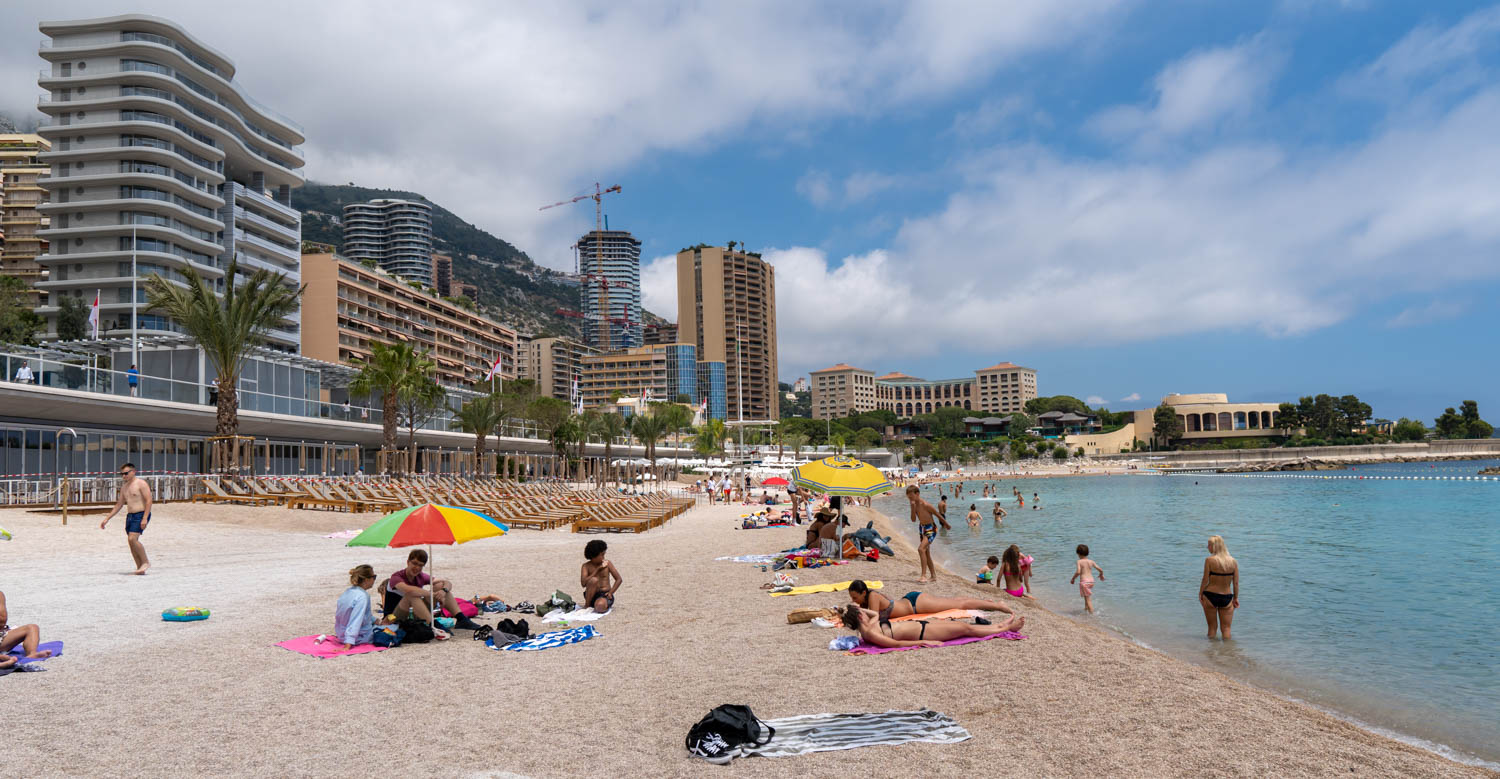
Speaking of construction sounds, another mistake we made was to try to go under the casino, through the tunnel made iconic by the Gran Prix de Monaco Formula 1 race. The tunnel is certainly made more for race cars than for feet, as it’s longer than it seems and not so interesting from within. And, yes, there was loud construction noise made worse by the acoustics.
The light at the end of the tunnel is the marina, which houses some of the most impressive yachts I’ve ever seen. Honestly some look more like cruise ships than yachts. Up the hill from there is the Monte Carlo Casino and Opera (they are actually two sides of the same building). We were not allowed within the casino because they were demanding to see recent Covid tests; vaccination certificates were not sufficient. From the opera side there is a garden with some interactive modern art pieces, while in front of the casino you’ll see an assortment of luxurious vehicles, two more gardens and high end shops.
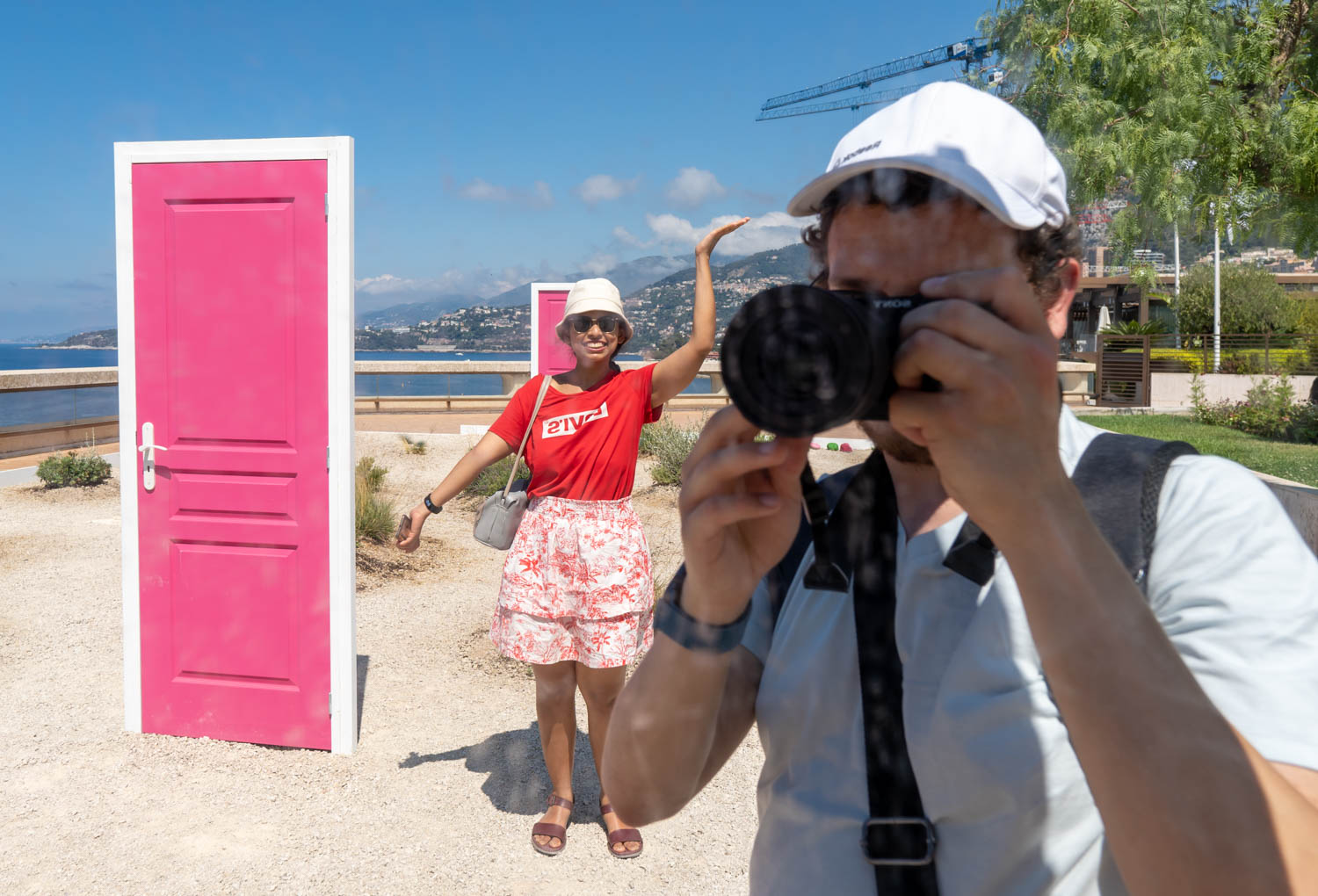
On the other side of the marina you’ll see Ville, the oldest part of the city. Again with Italian architectural roots, it houses the oceanographical museum, the prince’s palace and, of course, more gardens. This region is actually a good choice to eat for a more ``standard European’’ budget.
Continuing south, there is yet another port. Near it there is a semi-subterranean mall with a small zoo and some museums. On the other side, there is Fontvielle, one of the newest parts of the city (it was actually an artificial increase to the country’s landmass!) which houses a stadium and, you guessed it, another garden, focused on roses.
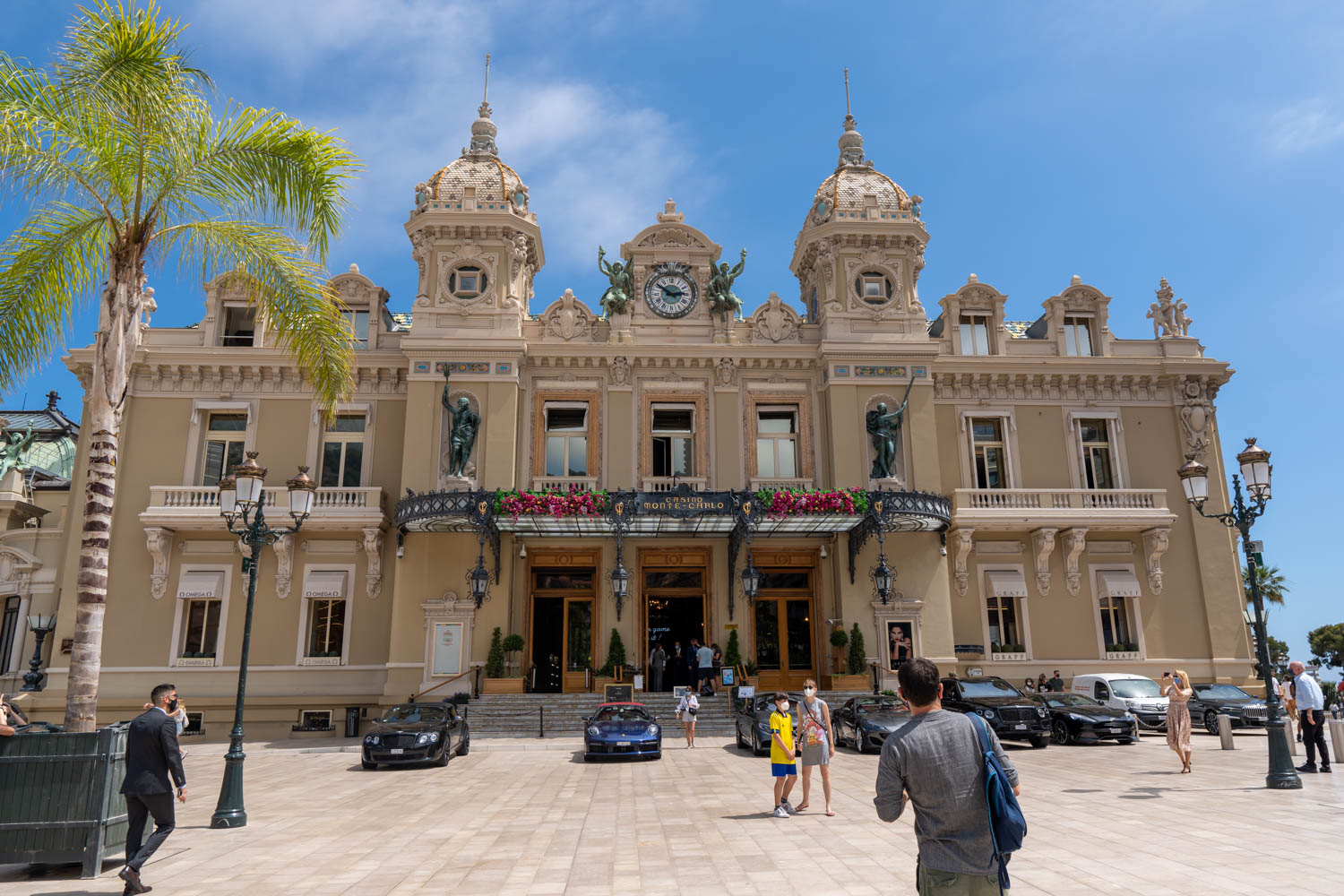
A few more steps from there and you’re already back in France. We spent approximately 8 hours in Monaco and were able to see most of the country, but not visit all museums and parks available. We skipped, for instance, the oceanographical museum, since we had already visited the aquarium in Genoa a few days before.
My impression of Monaco is that it feels like a Disneyland country. Everything is a bit too artificial and perfect. It’s certainly designed to entertain the super wealthy, and it is beautiful nonetheless, but ultimately I think it would suffer from the same lack of variety I feel in small cities such as L’Aquila.